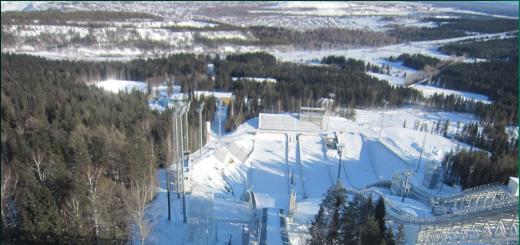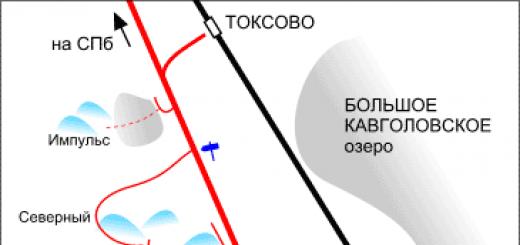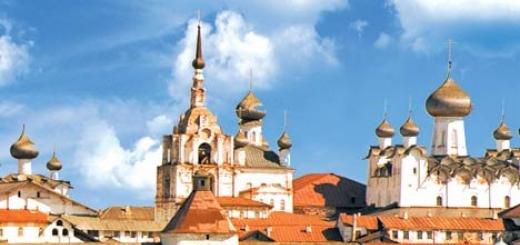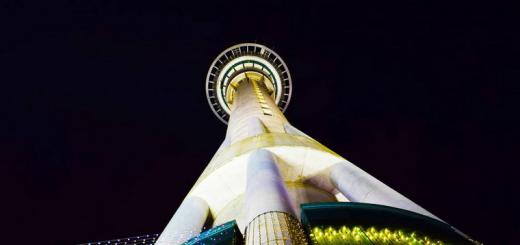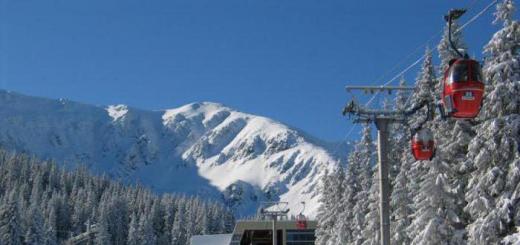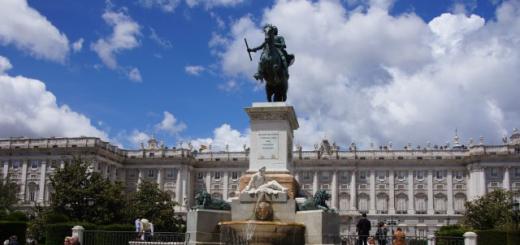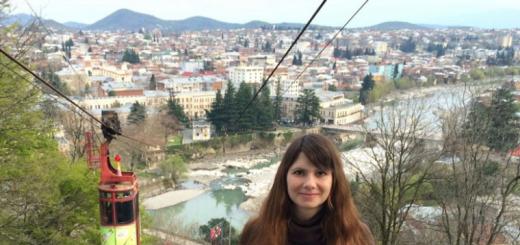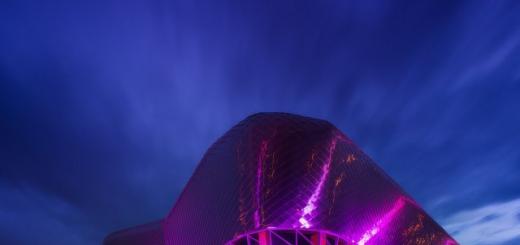There were questions:
Who and when called the Pavilion "Milovida"
The imperial flag does not happen, there may be an imperial standard, but he rose only on ships and (in the palace version) over the palace, where the emperor was. The pavilion does not apply to these categories. It is well known that the Andreevsky flag rose over him.
On Eastern Arrow Elagina Islands, where a large and average sky diverges, after the restoration opened a "pavilion under the flag" - one of the earliest works of Charles Rossi.
The pavilion near the granite pier with descent to water is located in a relatively small part of the park; The main facade he comes right on the Ushakovsky Bridge. It is strongly not like that of Rossi's imperative buildings: rather, the style marked with Igor Grabarem as a "strict classicism". Such Russian Palladianism: Kurengi, Starov, Cameron: Rectangular volume and semicircular colonnade. The arrow comes out six column open polisotone, under the roof of which is surprisingly ringing echo. The facade overlooking the park is framed by eight doric colonnades.
In the pavilion - tambour and symmetric two small rooms. An Elagina Palace ensemble was erected in 1818-1822 for the widowed (after the death of Paul I) Empress Mary Fedorovna. Porphyron-like widow by this time - already a meal sixty-year-old woman - reluctance was dragging into their main country residences - Pavlovsk and Gatchina. She spent the winter in Anichkov Palace, and in the summer went to Elagin. The "pavilion under the flag" was actually the building of the pier, on the islands they usually achieved on the water. The Andreevsky flag on the roof raised just when Maria Fedorovna moved to Elagin Island. Here it was possible to eat with the court and family, here the empress in rainy days drawn, embroidered, cut the bone. After the death of Mary Fedorovna, Nicholas I lived on the island, and in the second half of the XIX century he remained a spare residence, the great princes were stayed here, the vendensive guests of Romanovs were stayed. Since 1906, Elagin Palace has become a residence of Prime Ministers: So the recovered pavilion remembers Sergey Witte, Peter Stolypin, Ivan Goremykina.
The largest mystery of the "pavilion under the flag" - the well-preserved basement of the XYIII century detected during the restoration. It appeared in Ivan Elagin, who owned the island from the 1770s to 1807. Apparently, at him, at this place there was a certain structure that Rossi rebuilt. Meanwhile, Ivan Porfiryevich Elagin - Petsman Ekaterina II, State Avestigator, Theater, Writer, the collector of the Old Russian literature was the head of Russian Freemasonry. He created a whole system of so-called Elaginian lies. They were famous for their openness, the meetings in them were accompanied by musice. When in the 1790th, the masons were subjected to repression, Elagin and his comrades continued to quietly gather.
The media appeared in the media: the basement - nothing but a room where Ivan Elagina was going under the leadership of Ivan Elagina. And the dungeon was connected with the Elagin Palace and Stone island. This, of course, nonsense. Firstly, the height of the basement is about one and a half meters - does not make it possible to be here free to a person even medium height. Secondly, the masons were not similar to the buddies of Gaidar Timur, the team of which was going, as is known, on a specially equipped attic. Masons have been reached in palace living rooms, and not in dungeons from Gothic novels. Nic underground strokes Restorers did not find. However, the appointment of the basement is not really clear (pantry? Wine cellar? Camera torture?). Restored by the Russian money Russia Pavilion is mysterious and in itself, without Masons.
Lion Lurie Flag was dug off basement // Newspaper Kommersant St. Petersburg, №120 (2489), 12.07.2002
How to get to Elagina Islands? There are many ways, but it is not important. For what you need to go there, this is what the question is. And Elagin Island is attractive in St. Petersburg to many. Let's start first.
Let's start with amazing landscapes
The natural beauty of Elagina Islands is due to a feature of its location. He is in the Delta of Neva, near her mouth. On both sides is washed by Nevsky sleeves: large and medium nevka, and from the seaside side - Finnish bay Baltic Sea.
Since ancient times, seaside lands were low and marshy. Elagin Island is no exception. Over time, its territory, as well as others, was dying. As for natural vegetation, it was previously represented by coniferous rocks, but over time they began to plant and "exotoms" - broader trees and a variety of shrubs. It is believed that the most first trees are "exotes" were planted here with Peter I - Oaks. Now diversity vegetable world Islands are very large. Especially I would like to note the places of the coastline along the network of inland water ducts, where over the water, forming natural silver gazebos, willow bent.

Formed over time on an elagin island park ensemble Every year in the spring-summer period is complemented by fields and flower beds of various colors. Especially remarkable period when the tulip holiday is coming to Elagin. And this is really a holiday! First of all, for the eyes and soul. It is impossible to stay indifferent to such beauty!
Elaginoostrovsky "Zoo"
Natural animal world Elagina Islands in St. Petersburg is represented by a wide range of different types of fauna: the tracks and trees will join there, fearless proteins - red and blue, field and homemade mouses, a coat and a white, caressing, caressing and ermine, can be noticed ondatra in the water. In the bird kingdom, in addition to the usual urban "residents" - pigeons, Raven, Sinitz, Sparrow, ducks and birds are migratory - finch, raznzhenka, Lazorovka, Gray Mukholovka, Drazda, Ruch, Nightingale, Wagtail, Woodpecker, Blacktish, Mallard. In the warmth, the water is enough a large number of insects.
Thanks to a person, a small zoo was founded in the Elaginoostrovsky corner of St. Petersburg, where in the cells of the enclosures you can see: a black crow, a variety of chickens, pheasants, runners, Swans-Shipunov, geese, reindeer, Cameroonian goat, Liser Alice, home donkey Camilla And lamb mask.
It was placed in the historic part of the park, at the location of the XIX century farm, and from 2005 to 2010, zoological thematic exhibitions were held here. The mini-zoo has its name - "zoosphere" and is an interactive educational project, within which the animal trail is broken.
A bit of history
Elagin Island in St. Petersburg in ancient times, when it was still inhabited by the Finno-Ugric tribes, had a Finnish name. In many sources, it is given as "Misl Saari." However, the proposed meaning of this toponym as "bearish" or "black" does not match the translation from the closest sound and writing can be considered the "Black Island" version, only in this case the Finnish name will not be "mistoral", but Mista. Take for the starting point of the one that the initial Finnish name of the island was Mista Saari - "Black Island". According to the legends, the Guards of the Preobrazhensky Regiment at the beginning of the development of Peter I of these lands called the Island "Mishin", as bears were found here.
Peter I, rejecting new territories as european city Russia, in the conditions of the Northern War, was very constrained in the means, and therefore the lands in the vicinity of the new city crossed its associates, but provided that they would dry them and landscaping them. Elagin Island was presented by P. P. Shafirov. For the entire XVIII century, nine owners were changed here: P. Ya. Yaguzhinsky, A. P. Melgunov, G. A. Potemkin, I. P. Elagin, G. V. Orlov, and others.

The greatest contribution to the formation of the Elagino-Building Ensemble introduced I. P. Elagin, in honor of which this territory and will be called.
In the XIX century, the estate was redeemed in favor of the state with Emperor Alexander I and during the century was considered one of the favorite suburban residences of Romanov. And how to get to Elagin Islands, before the previous owners, the question did not stand - of course, in water.

Architectural ensemble
Elagin Island has large enough dimensions. To view his architectural attractions, of course, you can walk before them beautiful park. And if limited in time, how to get to Elagina Island so as to immediately get into it historical heart? Do not hope, the palace-park buildings of the ensemble are grouped so that they will still need to take a walk, but in short, all the way: from the metro station "Cross Island" Login main entrance in CPKIO and by going wooden bridge, go or on the embankment to the right or by the pointer through the park alley.
And here is a complex of amazingly slender and concise structures in the "antique" style. So only one master - architect St. Petersburg Karl Ivanovich Rossi could build. The center of the whole composition is the Elaginoostrovsky Palace. In addition, the ensemble included a weapon, kitchen and stuffing case, a musical pavilion, a greenhouse, a pavilion with a granite pier.

CPKIO yesterday
In this case, yesterday - the concept is very conditional. Rather, last time. Why is CPKIO? So Elaginoostrovsky Park was called in Soviet times, and indicated this name - culture and recreation. And now the old name is among the citizens.
After the 1917 revolution, the estate was nationalized. And in 1932, a city park opened in it, which two years after the discovery will be named after the Leningrad politician Sergey Mironovich Kirov. The park quickly became a place popular among Leningrad residents, not only because of its beauties, but also an abundance of leisure zones: sports, children's and dance sites, a variety of circle associations, chess and coarse tournaments, attractions and boating opportunities.
In the post-war, in the first decade, the ensemble revived almost from the ruins, and then returned the city again as a place active rest Leningradians. And the recreation center was opened in the palace. During this time, the park and architectural ensemble suffered greatly from vandalism. And from the end of the 1980s, Elaginoostrovsky ensemble began its true revival.

Leisure center today
The revival of the historical estate began with the discovery in the renovated building of the Palace of the Museum of Decorative and Applied Arts and Interior. Over time, in the palace began to organize interactive educational programs with the popularity of citizens, mainly for children and adolescents. And for adults are offered exciting excursions both by the Palace itself and interesting thematic routes throughout the palace and park ensemble. Here are regularly a variety of exhibitions and festivals, evenings are arranged for those who are ..., there are dance, children's and sports fields, a rope park and a tourist trail, as well as traditional boating and catamarans. Every year in June, for seven years in Elagin Island, street theaters represent their creativity within the annual international Festival And in the music pavilion in the summer there are musical evenings and concerts.

Here is another route for those who are looking for how to get to Elagina Islands: from the metro station "Staraya Village" walk along to Primorsky Prospekt and go close to the bridge. And then - where the soul wants!
The picturesque island of St. Petersburg, in which is located Central Park culture and rest them. Kirov, is the perfect place for unhurried walks in nature. What to look at the Elagin Island - read the material of the portal "Zagranitsa"
Elagin Palace
One of the imperial palaces Northern capital He is the main attraction of Elagina Islands. He received the name in honor of his first owner - Ivan Elagina. Who built a house in Palladian style - a mystery, however, some historians believe that it was J. Kurengy. At the beginning of the XIX century, Alexander I bought a whole island for his mother and instructed to rebuild summer Palace K. Rossi. Talented architect and gave the construction of its modern appearance.
 Photo: Shutterstock 2
Photo: Shutterstock 2 Museum of art glass
The unique Museum of Art Glass is located in the Orangery Corps of the Elaginoostrovsky ensemble. Most of the collection - the products of the Leningrad Glass Plant. It is represented by the most amazing work of the workshops of the windows of the 1940-1990s. Today, in the modern exhibition space of the museum there are more than 700 articles made of glass and crystal. There is a souvenir shop, working every day, except Monday and Tuesday.
 Photo: Kudago.com.
Photo: Kudago.com.  Photo: Vazaspb.ru.
Photo: Vazaspb.ru. Kitchen housing
The kitchen housing, standing near the palace, got its name because at one time it was a kitchen. The eastern facade of a semicircular two-story building is decorated with a portistric with decorative vases in niches, and fourteen sculptures of the ancient gods and heroes of the authorship of S. Pimenova are located on southern. The six-column portico of a doric warrant with a massive gate is located in the central part of the facade. Interestingly, all windows of the kitchen housing overlook the patio, and the construction itself is made so that the rays of the sun have never concerned the premises in which the food was kept and cooked. Today, there are foundations of the Elaginoostrovsky Palace-Museum.
 Photo: Locusterra.ru 4
Photo: Locusterra.ru 4 Bearing case
The two-storey stable housing of the horseshoe plan consists of a main facade with propellers that connect two symmetrical flaggels. In past times, there was a flibel-adjutant and a retinue of the empress. The building also dwells the stable officers, chambers and grooms were also inhabited, hay and grain were stored, a stall for horses and carriages were located. Despite such purpose of the premises, the stuffing case is a unique beautiful scenerypreserved to this day. Here are exhibition halls Elaginoostrovsk Palace Museum.
 Photo: fotokto.ru 5
Photo: fotokto.ru 5 Pavilion under the flag
A small pavilion with a flagpole can be found in the picturesque eastern part of the island near the granite pier. His creation also worked out by K. Rossi, changing the planning of a park gazebo located here, but retaining its main appearance. The structure is similar to a small antique temple and is a rectangular building with an open rother. The building "Pavilion is under the flag" is called the imperial flag climbed over his dome when the royal family honored his own visit.
 Photo: Panoramio.com 6
Photo: Panoramio.com 6 Music Pavilion
The musical pavilion is located along the Embankment of the River Middle Neck. It is two symmetric rooms and an elegant open polisotone with marble colonnada. The building of the musical pavilion, built in 1824-1826, was rebuilt several times, while during the reconstruction of the 1980s it was not restored in its original form. Beautiful view of the old English garden can be seen behind the pavilion.
 Photo: Vikni.LiveJournal.com
Photo: Vikni.LiveJournal.com
Oil meadow
The green carpet of the oil meadow was used as a platform for all sorts of festivities in the XVIII century. In the time of Elagina, this place turned into a partial garden with a variety of colors. Architects Karl Rossi and Joseph Bush - the younger decided to completely change the regular layout and turn the territory of the oil meadow into a spacious field with free, smooth circuits.

The pearl of the palace and park ensemble, built on the Elagin Island on the project of Russia in the 1820s, is considered the Elaginoostrovsky Palace. For the first time in our country, the center around which the ensemble was built was not the square, but the oil meadow. At the interiors of the palace, a huge role was assigned to decorative design. All materials and all the masters were exclusively domestic, which was unusual and very patriotic for that time. Nowadays the palace, restored after the war, works as a museum.

On the territory of the greenhouse corps you can find one of the most amazing museums of the city. He owes its uniqueness located in his walls of the collection, the basis of which is the products of the Leningrad Glass Plant. The main exposition is represented by the best products of glass-produce masters, which were carefully collected from 1940 to 1990.

The eastern part of Elagina Islands closes a small pavilion, erected by the project of the famous architect Karl Ivanovich Rossi. The construction is a rectangular object with a skillfully inscribed open rother. An elegant pavilion at one time began to call the "Milovida", but in fact his official name is a pavilion under the flag, because the imperial flag was raised over the flat dome when members of the royal family came to the island.

In 1826, a pavilion appeared on Elagin, who wanted to adapt under housing for duty officers. However, in the XIX century, under the roof half-weather, concerts began to give concerts. The musical pavilion was rebuilt several times, and 1980 he led him to historical mind. Nowadays, the construction periodically fills with music: for example, the famous "yellow piano" came here, playing anyone who wishes, and in summer days, dancers rehearse, including music on a portable player. Do not be surprised. By the way, in Elagin in summer, military orchestras perform musical works, but for some reason they are not going to the musical pavilion.

Although there are a lot of secluded corners on the expanses of CPKIO, where romantic notes are clearly felt, none of them compares with a gazebo "about four stone pillars." Building XVIII centuryWhat was created by Ober-Hofmeister of the Imperial Court Ivan Elagin, snaps over the island on the third southern pond. It is immediately clear that the name for the pavilion did not have to think for a long time. The gazebo is well preserved. She reached us in the "alteration" of Karl Ivanovich Rossi. The famous architect "entered" the pavilion into a common appearance - added strict elements of late classicism and toned in gray inherent in a general ensemble of a green zone.

Canonical figures of lions on the background of a canonical view at the bay. But in general, they should not have been here. They were installed and repaired on the Elagina Islands Arrow in 1927, when they had already shouted a half century. It is definitely unknown when these lions are spawn. First, according to scientists, these sculptures were intended for the giving Stroganov, then they were transported to his own possessions near the black river. There they stood before the beginning of the 20th century. Then they moved to the Putilovsk plant (now Kirovsky). And only after a terrible flooding in 1924, in the absence of funds on new lions, these were established on the destroyed banks of Elagin Islands. Now it is one of the favorite places of all holidaymakers in St. Petersburg.

In a series of warm days, many come to CPKIO not only to walk, but also to work out sports. Running clubs are arranged here, and rollrs and skaters ride with even asphalt tracks. There are in the park your own rollerrome, an area of \u200b\u200b800 sq.m. It is possible to find it near the cafe "Note". Here is a smooth asphalt and several figures for extreme riding (for example, iron ramp). Here you can just ride or take part in freestyle competitions.
In addition, the island is played in volleyball. To do this, there are several volleyball racks on the beach. To play, you need to stock yourself with your own grid, a ball and, of course, desire.
Last year to sports entertainment A rope park was added. The park on Elagin consists of 4 tracks, 50 stages and 12 Zip-Launov.

Few people know that on the expanses of the popular green zone you can find masterpieces of world art in free access, and even transferred from a flat canvas measurement into a three-dimensional view. Thus, near the stable case on an Elagin Island in 2012, the sculpture of Alexander Taratynova was established, which is engaged in the creation of the volume embodiments of classical canvases. One glance is enough to guess in the composition of the famous painting Henri Matisse "Dance", the original of which is stored in the Hermitage.

Once Elagin Island inhabited brown bears, but with the arrival of man, Kosolapov had to leave the island and to smire in less noisy places where no one would interfere with the eye. However, Elagin Island remained inhabited: now he is inhabited by friendly feathered and wonderful squirrels, which are so accustomed to the citizens, that they are glad to be in hand, if only you had anything like that. But not only fluffy lean and singers are the island. There is a mini-zoo, broken in 2005 in the historic place of the farm, where various pets lived. Now there are fairly comfortable enclosures, which inhabit the northern deer, the bug in the Susie and Lisa Alice, which they threw on Elagin in the box.

The picturesque fleet is replete with high trees, well-kept flower beds and pure reservoirs. Here you can walk along the wide alleys or with the berth to go on a fascinating water trip on a boat or catamaran in the company of majestic swans. A boat station usually opens in the first days of May.
Peter Arkadyevich lived on Elagin Island with his family in the summer from 1907 to 1911 at the invitation of Nicholas II. Tsarist Residence Island in Delta Neva became from 1816. The first mention of the island in Russian written sources date back to the first half of the 18th century, then he was called Mishin Island. Mishin may have been consonant with the Finnish name of Misulenseari.
"To celebrate" the island began on the initiative of Peter I. In the XVIII century, the island often changed the owners, one of them was Prince of Grigory Potemkin, who sold Ivan's Island to Elagin. In 1786, the Palace was built on the island and the English park with ponds and canals was divided, then the name Elagin Island was fixed. The park on the island was first discovered for public visits.
In 1817, by decree of Emperor Alexander I, Elagin Island was bought in the treasury. Alexander I wished to create a residence on the island for my mother of the entertaining Empress Mary Fedorovna. A commission was created for the restructuring of the Palace on the island, the project was commissioned by the architect Karl Rossi. He completely rebuilt the house I.P. Elagina, leaving only the durable external walls, giving the new palace the line of ampir style. Powerful rotunda in the center of the construction on both sides was supplemented with side portico with the frontones and columns of the Corinthian Order. Western facade K. Rossi decorated portico with six columns.
In 1822 the palace was ready, at the beginning of summer from the pier on the contrary Winter Palace Alexander I on a steamer for the first time taken out his mother with a retinue in the newly constructed suburban residence. Rossi met the Imperial steamer on the Granite Pier Island and organized a solemn show of his creation, which accounted for Maria Fedorovna. In addition to the palace, the architect built a "pavilion under the flag" by a semicircular rotunda in the form of an ancient temple, a kitchen pavilion, decorated with niches with the statues of ancient gods and a musical pavilion. For K. Rossi, this project was a real victory and elevated him to the top of the world glory.
After the death of Mary Fedorovna, the palace served as a summer residence of Romanov. The interiors of the palace remember the guests and the owners of Elagina Islands, Maria Stolypina recalls: "Despite its big sizes, Elagin Palace turned out to be very cozy, and without having a week in him, we began to feel like this house we are familiar with the years and roads. Downstairs there is a very beautiful oval hall with choirs, living rooms, an office and reception desk, as well as two always locked rooms in which Alexander III lived before. Upstairs a small living room and all the bedrooms, and another house church and two rooms for visits. "
Palace from the XX century
Like other royal estates, after the revolution of 1917, the palace passed through Petrogradsky Council. Until 1929, the Museum of History and Life Museum was posted in the palace, then the Institute of Crops. In 1932, a culture and recreation park was organized on the island, which in 1934 began to wear the name S.M. Kirov, the commemor of the traditions of the Russian nobility. During the war, in early 1942, a fire began in the palace, in which the unique interiors K. Rossi died. The restoration of the complex was conducted from 1952 to 1960, after which he served as a holiday home of Soviet citizens. Fortunately, in 1987, Elagin Palace appropriated status. On the first floor there were emerging interiors K. Rossi.

